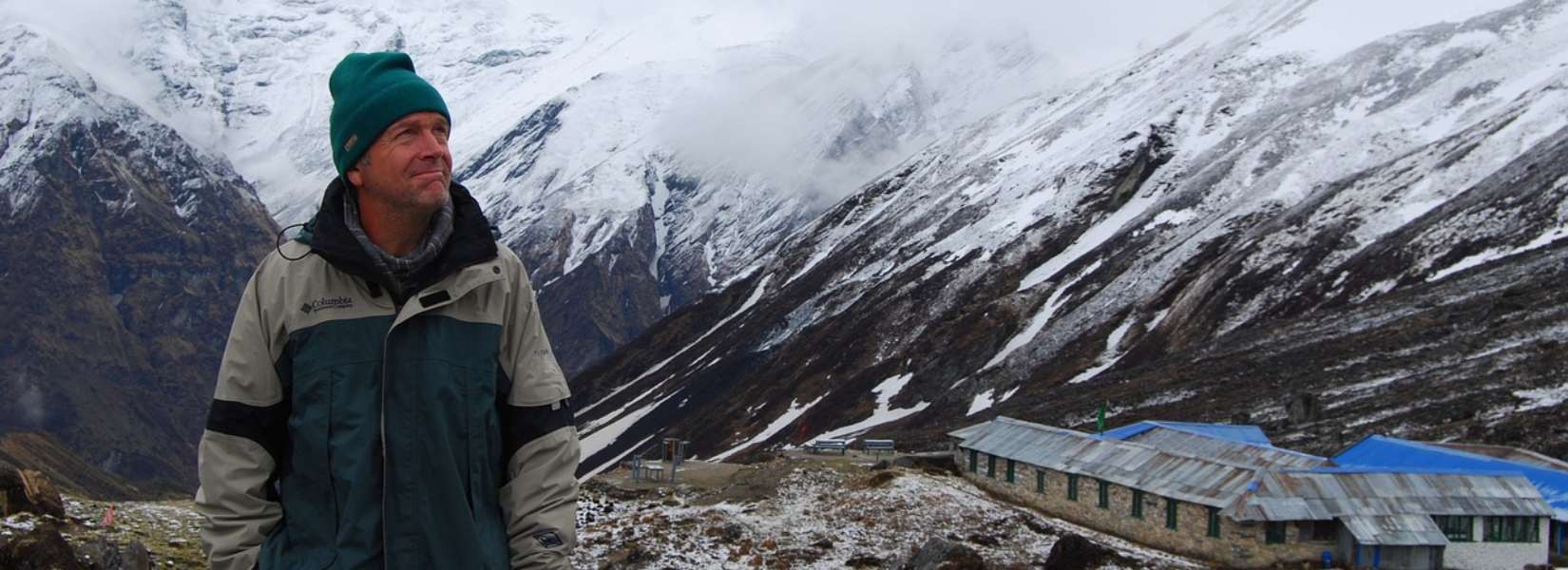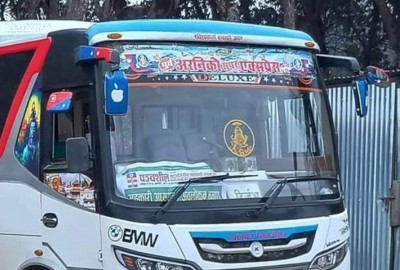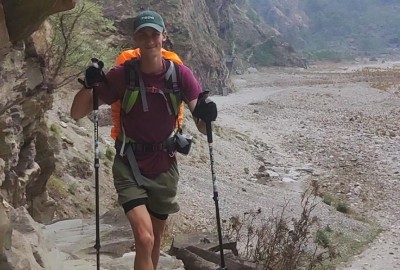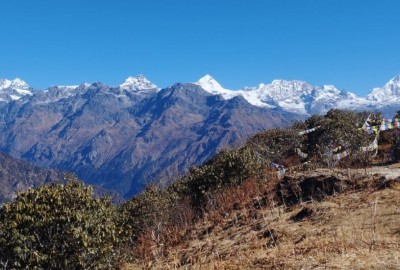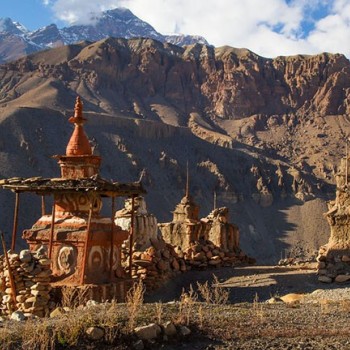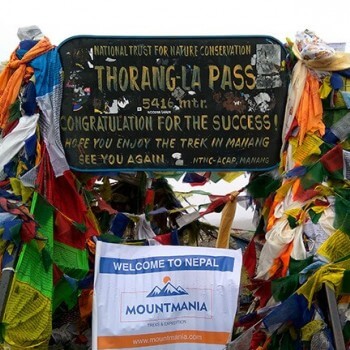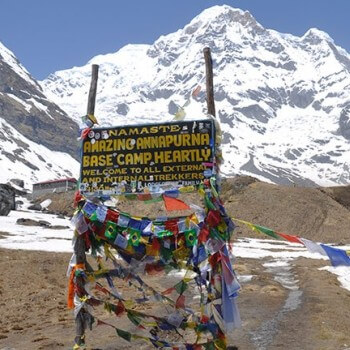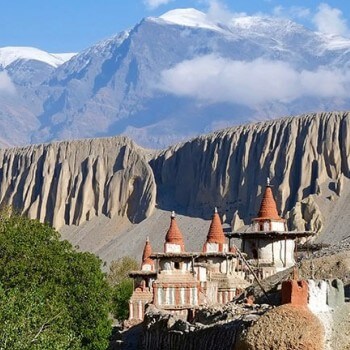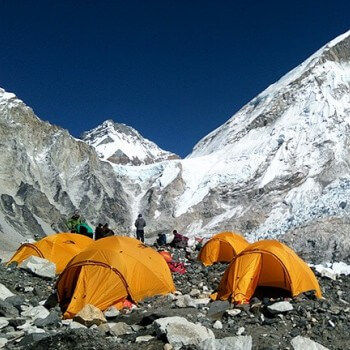There are two ways to figure out the cost of trekking in Nepal. One is the hard way and the other is the easy way. While the easy way is simply just signing up for an online package and choosing the one which seems to be the most suitable for you, it is in no way cheap. The hard way is to do research on how the costs are calculated and determine the most cost-effective method. While it might be time-consuming, it is certainly much cheaper than the former one. There are certain factors you have to take into account before determining the cost of a trek. For instance, one of those factors could be the time of the year.
Table of Contents
Plan your trip to Nepal
Customize your trip with help from a local travel specialist.
While there are many Trekking companies offering Treks in Nepal, they can be quite expensive. Aside from the cost, a good sum of your money not reaching Nepal and never getting to meet the guide you will be trekking with is one of the biggest economic problems while trekking.
Cost of Booking a Trek in Nepal
An International Travel Company
While booking with an international company online is the fastest way, this is the most costly way in which you can book a Nepal trek or tour. Taking an example of the Upper Mustang and Annapurna trek, as they are often regarded to be one of the more expensive treks in Nepal because of the special permits that they require. The permits can alone take an added cost of approximately USD 500. For an average 8 to 12 day trek, the prices that are charged by international trekking companies can range anywhere from USD 600 to USD 5000 or above.
The pros of booking with an international trekking company online are the arrangement of your trek. They will prepare everything for you and you just need to arrive here to start the trek. You can come here today and start the trek today itself or from tomorrow. The cons of booking with an international trekking company online are that for pre-arranged comfort, you will be paying a relatively higher price. You will also not get to meet your trek or tour guide beforehand and will not be acquainted with them. Moreover, you might also be put into a group tour without any prior knowledge. When booking online, you have to make sure of everything that is included in your package and affirm that all the permits you need and your transport have been included in the package you have signed up for.
You should be aware that if the price of a trek seems too good to be true then it probably is. There are well known international tour companies that offer cheap $900 Annapurna or ABC treks. The price of the trek is low because they join you with another much larger group which can be a problem later on. Some of the problems that might occur are another group selecting last-minute trek routes, people not showing up, having no say in your accommodations or just generally not liking the people you have been placed with. There is not much you can do when you get into treks like this, so you have to make sure to be very careful and take appropriate precautions.
Online Travel Booking Portal
The difference between booking a trek with an online booking portal and an international travel company is that a booking portal gives you more options by listing all the other trekking companies and is a third party company. While trekking in Nepal in a group might save you some money, it is usually not a lot. Furthermore, there isn’t a lot of difference in the process you need to go through with a booking portal and an international travel company. Most of this local booking portal have excellent web pages that provide great information and service, all the while having trustworthy local level connections. Moreover, the problems that you may face while booking through an international company will be the same ones that you will have to face here too.
When booking through an online travel booking portal the major benefits are that you will see a fairly accurate estimate of prices in front of you and will also have the convenience of speedy booking. The downside is yet again not knowing who you will be trekking with and that rather than being spent locally in Nepal, your money will be circulating internationally.
Furthermore, nowadays community homestays basically refer to what is known as a tea house; which is a traditional term for a locally run inn located in the trails that have been in business for decades. You should be careful when listed trekking companies offer community homestays as they are just looking for another way to charge clients some extra money. You should also know that you most likely will not be able to modify your package and it will include charges for trivial things such as “a tour of Kathmandu” or “airport pickup”. The cost of booking in this way is the same as that in a private company.
Local Nepal Travel Agency
When it comes to the matter of booking through a local Nepal trekking agency, a lot of the money you spend will stay in Nepal and it is rather cost-effective and ideal for many people. In this method, you will have to research a little on your own and shop around by yourself. The thing you do have to remember is that while adding up the cost of a trek through a local Nepali trekking agency, they will mostly give you two options: one is to just hire one of their guides alone or the other is to buy a tour package. A tour package basically entails everything you need like your guide, permits, domestic transport, and accommodation. With the guide option, you will only be getting a local guide.
For an average of 8 to 12-day trek, the cost of a package trek may range anywhere from USD 800 to USD 1700 or above. While the prices do not include your travel drinking water, travel insurance, trekking equipment, and visa fees, they should most certainly include your accommodation, trekking permits, meals, and local transportation. There are different types of packages available from high-end tours to ones that are mid-range to packages designed for those on a strict budget. The prices will depend on the type of package you choose. The trekking routes will stay the same in all the packages but the meals and accommodations will differ.
In this type of booking, everything will be done for you and you will be dealing with only one company. Everything will be prepared according to your liking or requirements, from the meals you eat to the accommodations you rest in. You can also modify the package to your liking or needs and meet your guide ahead of time.
Hiring a Local Nepali Trekking Agency’s Local Guide
This is one of the most popular ways to organize a trek in Nepal and while it is very much alike to the package tour written above, it does give you a lot more independence. The guide only option may be ideal for you if you think you can save some money. For a guide, the price range is usually USD 30 to 60 per day. In this type of trek, the price mentioned is just for the guide, and for any other essential things that might be necessary, you will be required to pay for yourself.
There are tons of pros of hiring a local trekking agency’s local guide. In this type of trek, you will save money while still getting the necessary assistance. As a deal closer, the local trekking agency may also offer help in acquiring the trekking permit as well as in other things like accommodation in Kathmandu or Pokhara. The downside is that you will need to organize everything by yourself including accommodation and meals when you have started your treks. While it is comparably easy, you might end up paying more if you do not know how to bargain with the locals. This is also time-consuming as before your arrival, you will have to get in touch with some local agencies.
An Independent Trekking Guide (Freelancer)
This type of trekking guide is a person who is not related to any trekking company and is usually found through a recommendation or on the street. The cost usually ranges from USD 25 to 35 per day after bargaining. In this type of trek, the price mentioned is just for the guide, and for any other essential things you will have to pay by yourself.
The main downside of hiring an independent guide is that they might not be qualified or they could have other issues. Before choosing an independent guide, ask for their trekking license and look out for telltale signs of problems like alcohol issues. Another problem, for solo trekkers, mainly female solo trekkers, in Nepal is that they will have no one to rely on except for the guide.
Hiring a Guide-Porter
Someone who has just been qualified as a guide is regarded as a guide-porter and trekking with a guide-porter is one of the most economical ways of trekking in Nepal. However, while it is cheaper, the guide could also be lacking in different ways, such as not being able to understand English, no customer relation skills, etc. They will also lack the experience that you will find in most fully qualified guides. With some bargaining, the price is usually USD 18 to 25 per person. You will only be paying for the guide porter and will have to arrange the accommodation and food yourself. The downside to this is that the guides can be quite young who lack maturity and responsibility. Also, a guide-porter is in no way a substitute for a fully qualified guide.
Hiring a Porter
A Trekking porter is in no way a Trekking guide and they are not warranted or deemed qualified to take tourists on a trek. Taking a porter on a trek as a guide is considered to be illegal. With some bargain, the price of the porter is in between USD 15 to 20. The porters' food and accommodation are included in the price.
More importantly, a porter is supposed to carry only up to 20 kg of your equipment and as the porters are usually not insured, you will be liable for anything that happens to the porter as you are their employers.
Hiring a Non-Nepali Guide
As the name suggests a Non-Nepali guide is someone who is not from Nepal and who are usually hired for their language skills. An important thing to remember is that there are several foreigners in Nepal who are working as illegal guides. They are not insured and are not legally registered as guides. This can be a huge problem as they are working illegally. So, if you want a non-Nepali guide, it is better to hire them through an international company. It might be costly but you will have the assurance that they are registered guides. In Nepal, there are many local French-speaking Nepali trekking guides along with Japanese, Spanish, Russian and Chinese. They do cost a little more but they are more than available.
Solo Trekking in Nepal
Solo trekking is the cheapest way to trek in Nepal. In this trek, you will be doing it alone and there will be no guides, porters, or guide-porters. The only cost here will be for your accommodation, permits, meals, transport, drinks, and equipment. There will be no additional cost. The upside to this is the reduced cost as well as the chance of doing it yourself. The downside is that it is not advised if you have never trekked alone or never done trekking alone in Nepal as there are instances where solo trekkers have gone missing due to various reasons. You should also remember to get international insurance that includes Nepal if you are planning on going on a solo trek.
Average Cost of Trek
The average cost of the trek is based on various factors such as the time of the year, who you book it with, where you book from, and what kind of trek you want. Short treks that take 1 to 6 days to complete can cost as less as USD 300 while luxury treks that take 12 days to complete can be a whole lot more expensive.
Also Read: 20 Best Short Treks in Nepal (Updated 2020)
Places to Save on Expenses
It is highly recommended that you do not skimp over a guide. If you do not think that you can afford a guide on your trip, then it is better to take a shorter trek or a different trek than to risk your life and safety. Also, if you have a short amount of time then it is better to pick a shorter trek rather than risk your life in an attempt to complete a 12-day trek in under 10 days by risking altitude sickness. The major area where you can save costs is by choosing a local agency or guide over an international online tour company. Other tips by which you can reduce your cost are listed below:
- Most Treks in Nepal do not need fancy new just in equipment. You can buy most gear at a cheaper price in Kathmandu and Pokhara. The only exception being trekking boots. While you do not need super high tech boots, you should have a decent one that has been broken in.
- Taking a bus or trekking to the trailhead is also another way to save cost as flying can be quite expensive in Nepal for non-Nepalis. The ticket charge is almost double or triple to the ticket charge of a local person. You will need more time if you take a bus or a trek.
- Another way is to take only the things you need and leave your other luggage in the hotel. That way you will not have to pay for a porter and you will be able to save a lot. The hotels will not charge much for baggage as long as you stay with them.
- You should also stick with local food rather than trying out the more extravagant stuff on the menu. The local food is Dal Bhat which is the cheapest product on the menu but nutritionally dense. For those people who have sweet tooth, it is recommended that they bring their own chocolate bars as it can be quite expensive up in the mountains.
- Not staying at the popular tea house is another way in which you can save costs. While there will almost be double the difference in prices, the accommodation will not be as different.
- Treks such as the Upper Mustang require special permits while Lower Mustang does not. The views of the mountains and the sights you will see will be the same. You can save up to USD 500 this way.
Trekking in Nepal: Cost and budgets breakdown
Cost of Transport
You usually have the option to choose from 4 types of transport which are flights, jeeps, buses or on your feet. The variation of the price is in the same order too, with flights being the most expensive means of getting from point A to point B. A trailhead which is the starting point of a trail is usually away from big towns so taking mechanical transport is often recommended. If they are already not included then your guide or porter also needs a transport cost. An example is the cost of flight from Kathmandu to Lukla to start the Everest Base Camp trek is USD 180 to 190 while taking a jeep or bus to Jiri or trekking to Jiri is much cheaper. This will take time but it is definitely more economical. The weight limit for baggage from Lukla & Jomsom on trekking flights is 10kg (luggage) to 5kg (hand carry) and if the luggage is more than the limit then there is an additional cost of USD 1 per kg. Generally, for the jeep to the trailhead, you will want to set a budget of USD 50 at the very least.
Cost of Accommodation
There are different types of accommodation along a trek. Take, for instance, well-known treks like the Annapurna Circuit and the Everest base camp, nowadays have a good number of high-end guesthouses along with medium-range guesthouses as well as budget accommodations. While the high-end places come with facilities such as an ensuite, hot shower, and TV to name a few, the midrange and budget guesthouses usually have private or shared rooms and hot water if you pay extra.
The prices also depend on the seasons. In peak seasons the prices will be more while offseasons have cheaper prices. And the cost of a room increases the further up you go. As little as 100 to 200 rupees will be the cost of budget tea houses at the start of the trail and the price gradually increases to 300 to 500 rupees all the way up to 1000+ rupees at a high altitude camp. High-end luxury lodges that can be found on well-known treks like Everest Base Camp will cost $100 to $300 per night. Also, hot showers are also not always included in accommodation prices. There might also be extra charges of about 200 to 600 rupees at an hourly basis to charge your batteries. While the cost varies from trip to trip, it is always a good idea to carry essentials such as batteries and toilet paper with you.
Cost of Meals and Water
The higher you go, the pricier the food gets. You can get the local food which is Dal Bhat at 200 rupees at the start of the trek and at around 800 rupees further up the trek. The prices differ between peak and off-seasons. The water also gets pricier the higher up you go. One liter of bottled water costs above rupees 50 at a low camp and 200+ rupees at a high camp. If you are worried about the quality of water then you can use water purifying tablets or iodine.
Cost of Permits
You will need two permits for almost every trek in Nepal. One is a TIMS card, while the other is a National Park Permit. Examples are the 3,000 rupees Sagarmatha National Park Permit you need to acquire for the Everest Base Camp Trek and the 3,000 rupees permit you to need to acquire for Annapurna Base Camp Trek, through Annapurna Conservation Area Project (ACAP). A TIMS card is needed for all treks except Everest, where instead of a card, you are charged a fee of USD 20 at Lukla as a Solukhumbu regional fee. The cost of a TIMS card is rupees 2,000 and the price can go down to rupees 1,000 if you are with a trekking agency. Restricted areas in Nepal require additional permits. An example of this is the USD 500 that the Upper Mustang and Upper Dolpo permit costs for a trek of 10 days.
Cost of Travel Insurance
Before the start of your trek, you should also make sure that you get excellent travel insurance that covers for both trekking and the altitude (6000m) you will be getting to. It is very important that you find out whether or not your insurance covers you at any altitude, as most travel insurance policies hide such crucial information in a small print, that they will not cover you after a certain altitude. Getting insurance is a must as the basic cost for a medical helicopter lift starts at a hefty USD 5,000.
Need Help Planning a Trip to Nepal?
Feel free to contact us, if you need any help planning your trip to Nepal. Our local travel experts will design a custom-made itinerary based on your time, group, cost, and other requirements.

